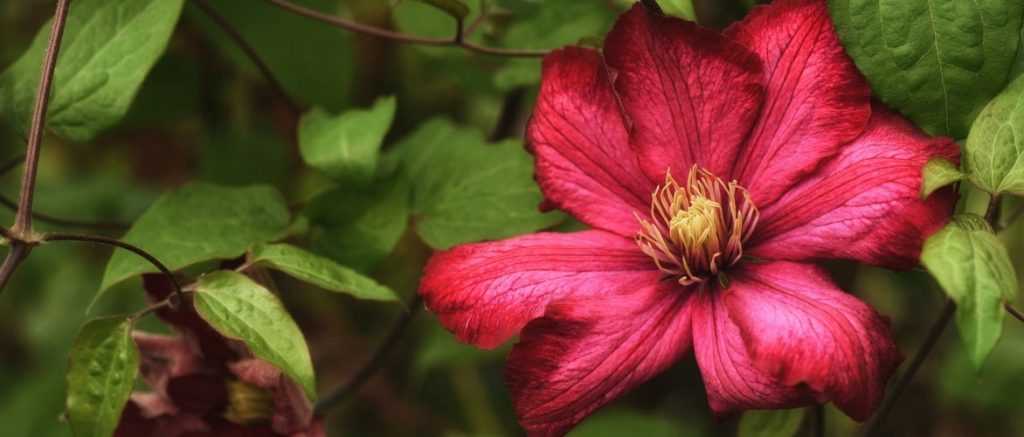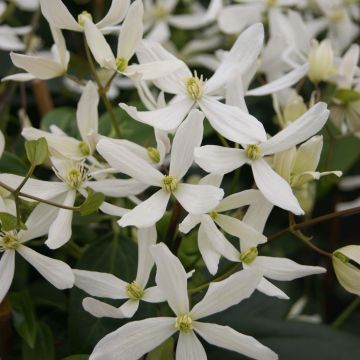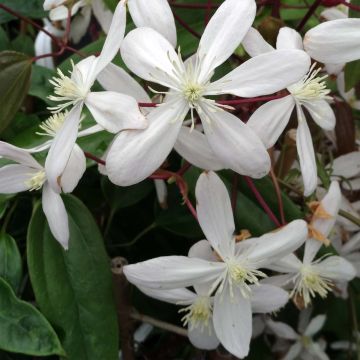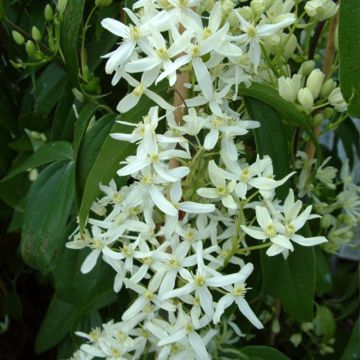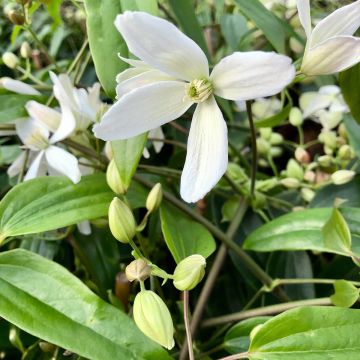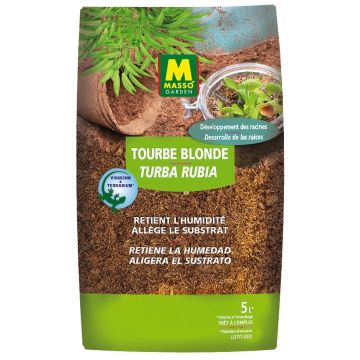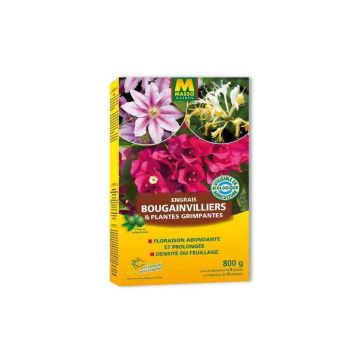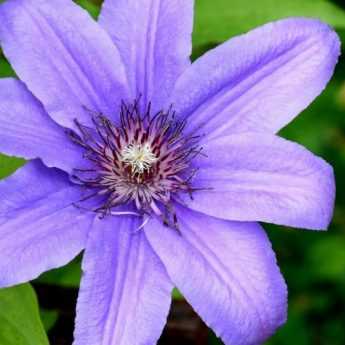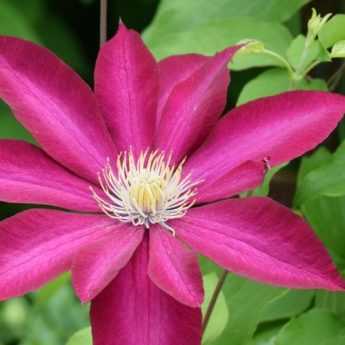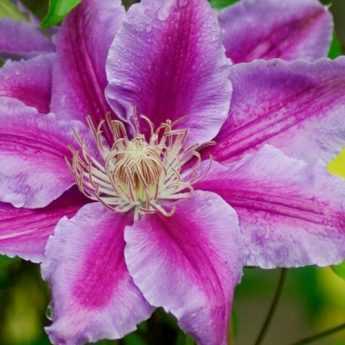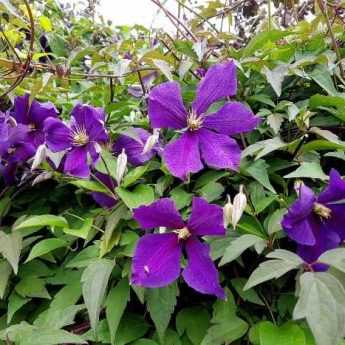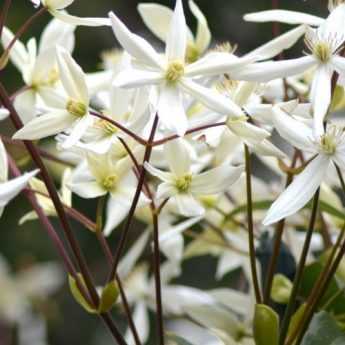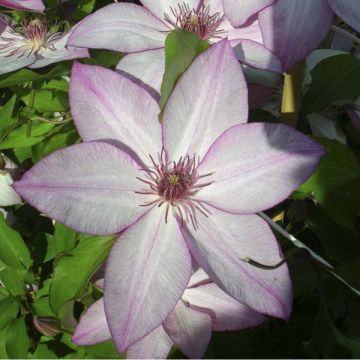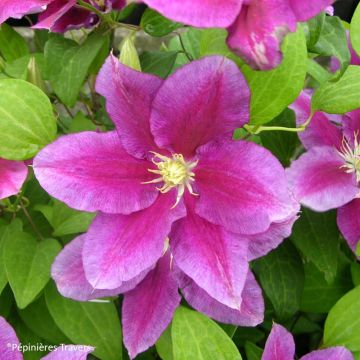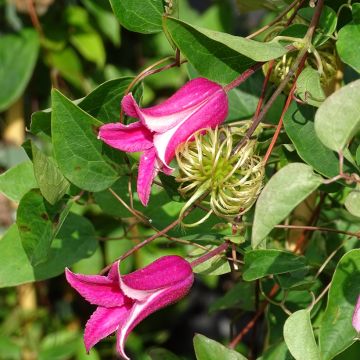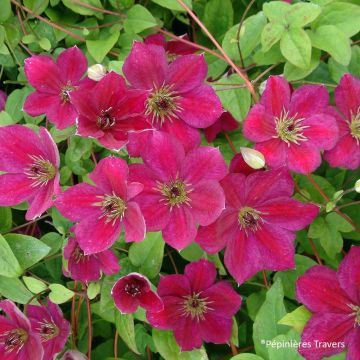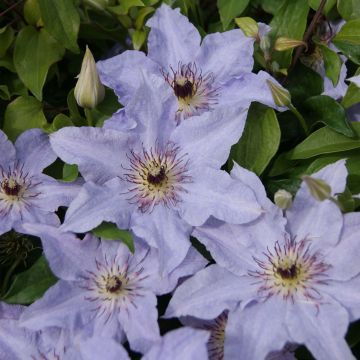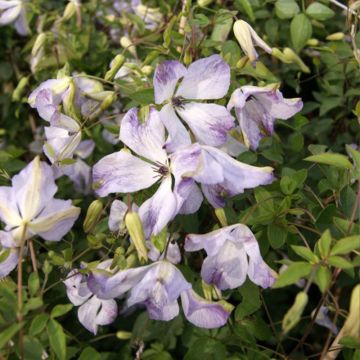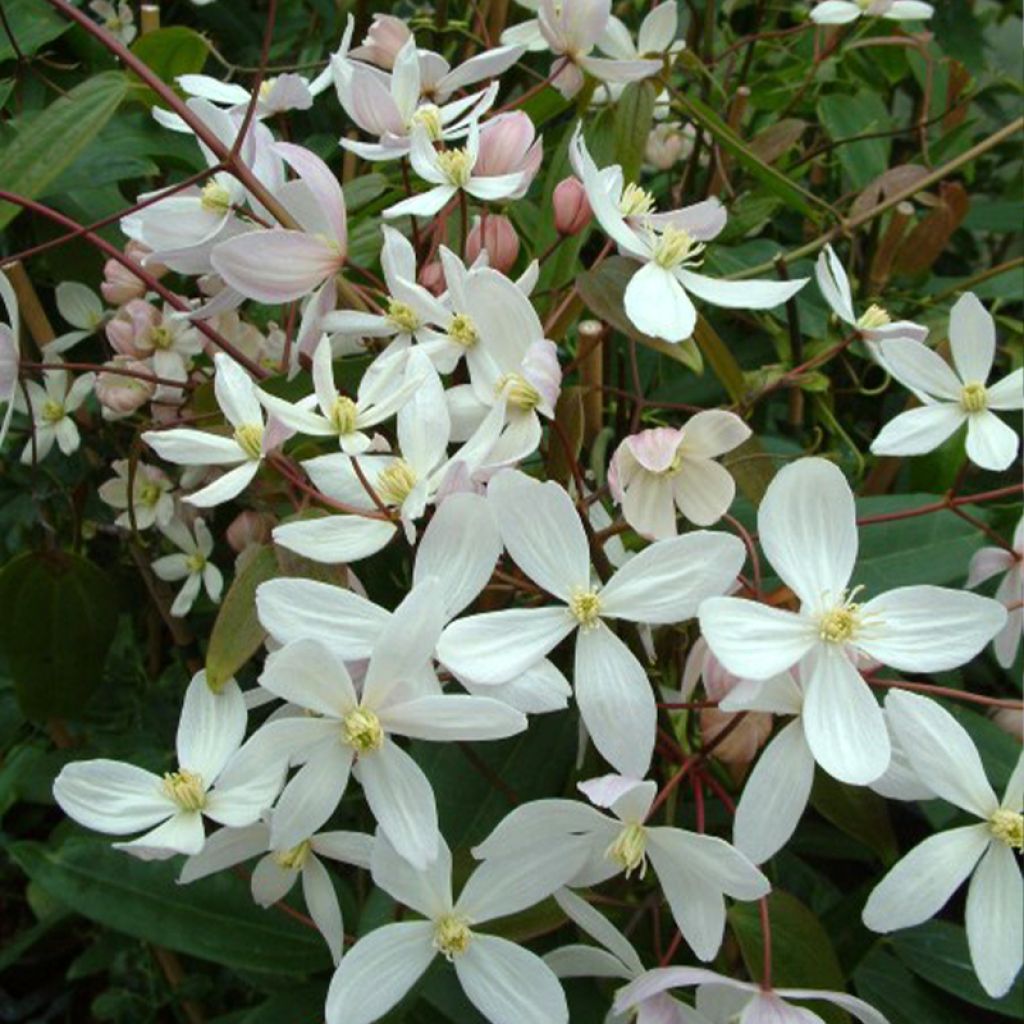

Clematis armandii Apple Blossom
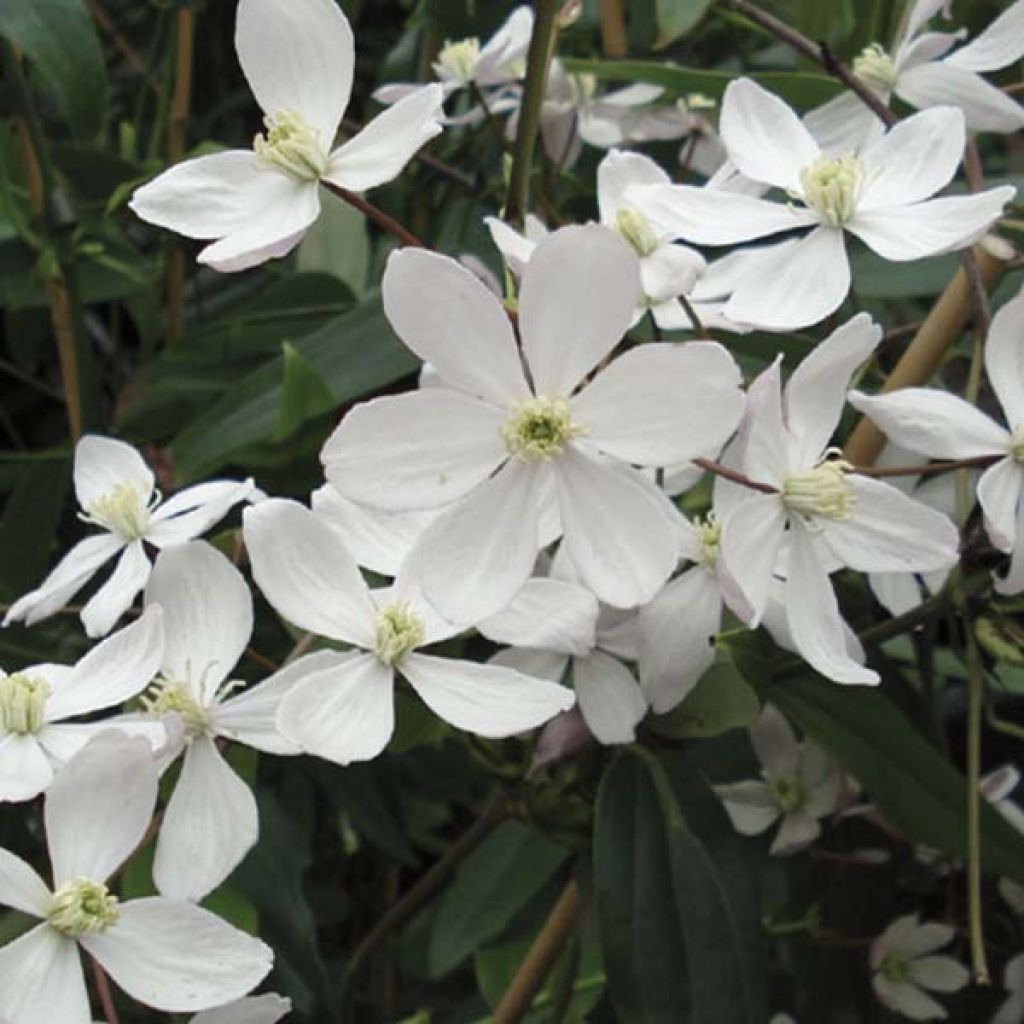

Clematis armandii Apple Blossom
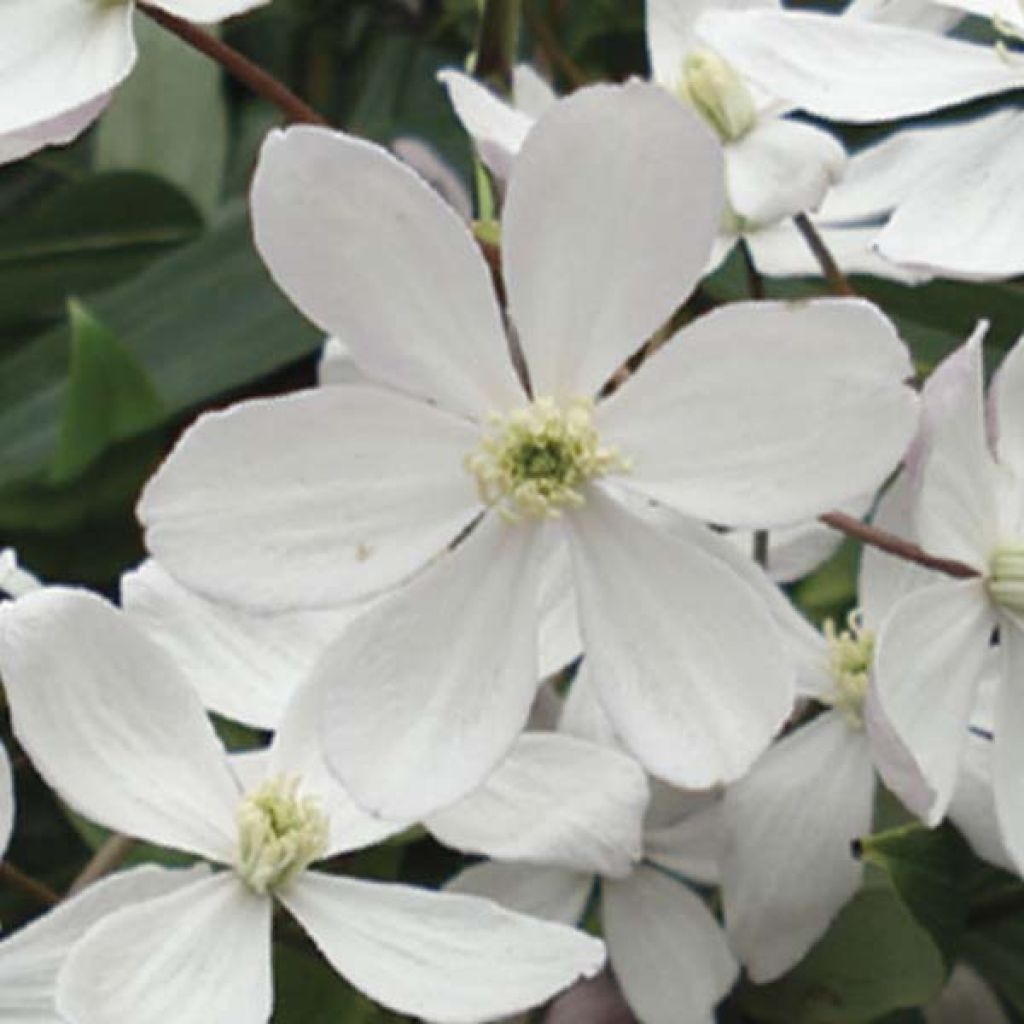

Clematis armandii Apple Blossom
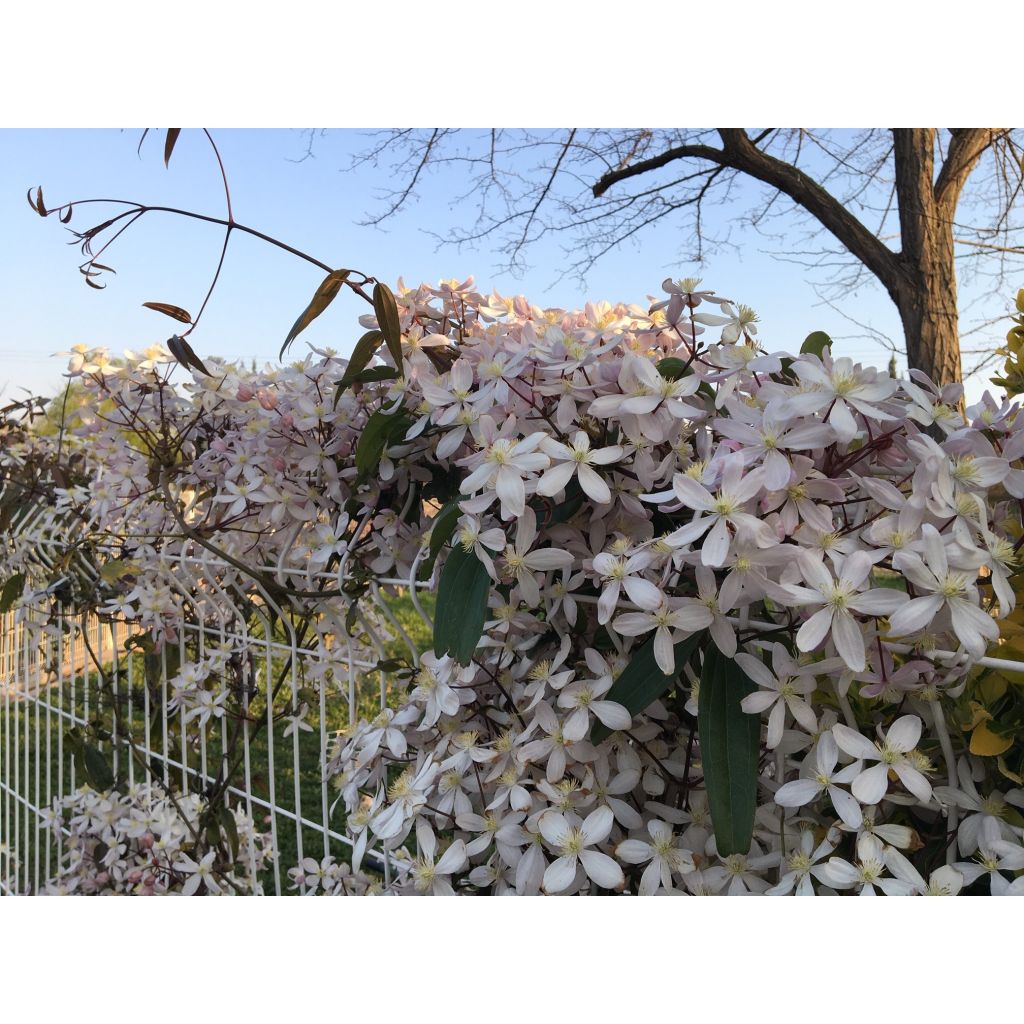

Clematis armandii Apple Blossom
Clematis armandii Apple Blossom
Clematis armandii Apple Blossom
Armand's clematis, evergreen clematis
This item cannot be shipped to the selected country
Delivery charge from €6.90
More information
Delivery charge from €6.90
More information
Schedule delivery date,
and select date in basket
This plant carries a 6 months recovery warranty
More information
We guarantee the quality of our plants for a full growing cycle, and will replace at our expense any plant that fails to recover under normal climatic and planting conditions.
From €7.90 for pickup delivery and €6.90 for home delivery
Express home delivery from €8.90.
Does this plant fit my garden?
Set up your Plantfit profile →
Description
The 'Apple Blossom' clematis is a lovely climbing plant with glossy, evergreen foliage in a dark green shade. In late winter, its vigorous stems are covered in hundreds of small white-pink flowers with a darker pink reverse, and a delightful fragrance. It's a delight for both the eyes and the nose, especially during a time when the garden is less frequented. It is somewhat sensitive to cold temperatures and doesn't tolerate anything below -10°C (14°F). Therefore, it's preferable to provide it with a sheltered, sunny position, in a cool but well-drained soil, and a suitable support (trellis, pergola). It's also an excellent plant for your terrace, in a sufficiently large pot to prevent the substrate from drying out.
'Apple Blossom' Clematis armandii is a plant from the Ranunculaceae family, which includes many ornamental plants. Even though it may not be obvious at first glance, it is a cousin of larkspur or buttercup. This species is native to southern China, where it grows in copse, on the edge of forests, in clearings, and along watercourses, up to an altitude of 2400 meters (7874 feet). Its foliage is very characteristic among clematis plants; the leaflets, gathered in threes, are elongated and pointed (each reaching about ten centimeters) and are tough, dark green, and evergreen. The cold often gives them beautiful bronze-purple colours. As with most climbing clematis species, the long petioles curl upon themselves and form tendrils that allow the plant to firmly grip its support. It is named after Father Armand David, a missionary and botanist who collected numerous species in China in the 19th century.
Vigorous, 'Apple Blossom' is capable of quickly covering a support and can reach heights or widths of 3 to 5 meters (10 to 16 feet). From the end of winter, between March and April, the vine is covered in a myriad of relatively small flowers with 4 white-pink sepals, with a stronger pink marking on the reverse. Additionally, the flowers emit a discreet but very pleasant fragrance of almond or orange blossom.
The cultivation of Apple Blossom clematis is not very difficult: it simply requires a well-drained, cool, fairly rich, slightly acidic to slightly alkaline soil. It thrives in warm and sunny exposures, and once established, it can tolerate periods of drought. However, its hardiness can be lacking in regions with harsh winters (-10°C (14°F)); therefore, avoid windy exposures, especially to the north. If your climate is not suitable for planting in the ground, it also performs excellently in large, sufficiently deep containers. The only maintenance required is to remove any visible dead leaves, although they are usually quickly covered by new growth. If you wish to prune it, do so just after flowering to avoid compromising next year's blooms. This operation, however, remains optional.
With its somewhat exotic appearance, Apple Blossom clematis is simply spectacular when it can express its full potential, for example on a large trellis, a wire fence, or even within a hedge of bushes, where it will travel and cling as it grows.
Clematis armandii Apple Blossom in pictures
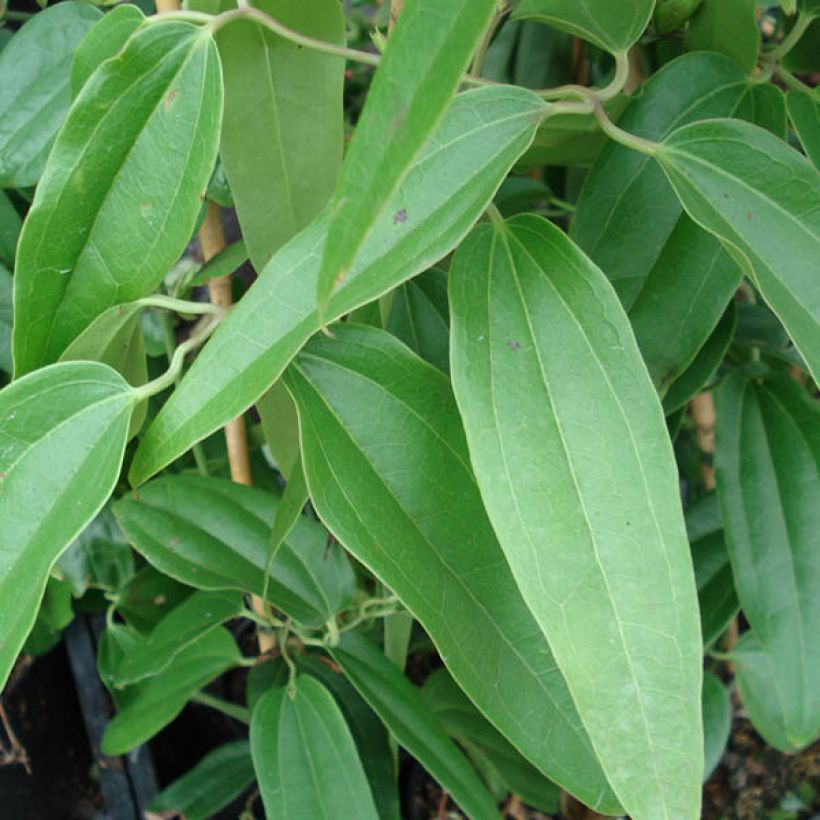

Plant habit
Flowering
Foliage
Botanical data
Clematis
armandii
Apple Blossom
Ranunculaceae
Armand's clematis, evergreen clematis
Cultivar or hybrid
Other Clematis Armandii
View all →Planting and care
Planting period
Intended location
Care
Planting & care advice
-
, onOrder confirmed
Reply from on Promesse de fleurs
Clematis
Haven't found what you were looking for?
Hardiness is the lowest winter temperature a plant can endure without suffering serious damage or even dying. However, hardiness is affected by location (a sheltered area, such as a patio), protection (winter cover) and soil type (hardiness is improved by well-drained soil).

Photo Sharing Terms & Conditions
In order to encourage gardeners to interact and share their experiences, Promesse de fleurs offers various media enabling content to be uploaded onto its Site - in particular via the ‘Photo sharing’ module.
The User agrees to refrain from:
- Posting any content that is illegal, prejudicial, insulting, racist, inciteful to hatred, revisionist, contrary to public decency, that infringes on privacy or on the privacy rights of third parties, in particular the publicity rights of persons and goods, intellectual property rights, or the right to privacy.
- Submitting content on behalf of a third party;
- Impersonate the identity of a third party and/or publish any personal information about a third party;
In general, the User undertakes to refrain from any unethical behaviour.
All Content (in particular text, comments, files, images, photos, videos, creative works, etc.), which may be subject to property or intellectual property rights, image or other private rights, shall remain the property of the User, subject to the limited rights granted by the terms of the licence granted by Promesse de fleurs as stated below. Users are at liberty to publish or not to publish such Content on the Site, notably via the ‘Photo Sharing’ facility, and accept that this Content shall be made public and freely accessible, notably on the Internet.
Users further acknowledge, undertake to have ,and guarantee that they hold all necessary rights and permissions to publish such material on the Site, in particular with regard to the legislation in force pertaining to any privacy, property, intellectual property, image, or contractual rights, or rights of any other nature. By publishing such Content on the Site, Users acknowledge accepting full liability as publishers of the Content within the meaning of the law, and grant Promesse de fleurs, free of charge, an inclusive, worldwide licence for the said Content for the entire duration of its publication, including all reproduction, representation, up/downloading, displaying, performing, transmission, and storage rights.
Users also grant permission for their name to be linked to the Content and accept that this link may not always be made available.
By engaging in posting material, Users consent to their Content becoming automatically accessible on the Internet, in particular on other sites and/or blogs and/or web pages of the Promesse de fleurs site, including in particular social pages and the Promesse de fleurs catalogue.
Users may secure the removal of entrusted content free of charge by issuing a simple request via our contact form.

































